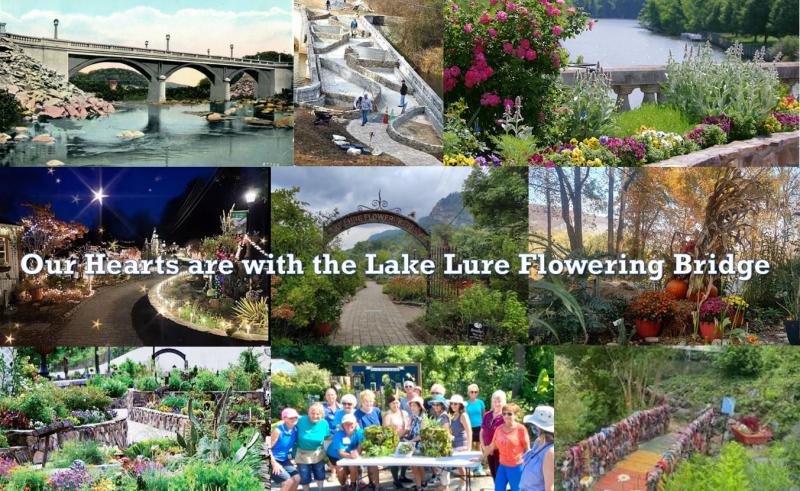History of the Lake Lure Flowering Bridge
A BRIEF HISTORY OF LAKE LURE
EARLY IMPORTANCE OF THE AREA SURROUNDING HICKORY NUT GORGE
Long before Euro-American colonization, Native American groups and their ancestors inhabited the expanse of North America, particularly the areas that are or were well-suited for human occupation. By the time European settlers began establishing themselves in this area, the path through Appalachian North Carolina following Hickory Nut Gorge had long been established as a popular route by native groups, most notably at the time the Catawba and Cherokee people. The combined proximity to a relatively efficient means of transportation, abundant natural resources, fertile soil, and majestic scenery led early native inhabitants to revere the area as a sacred place. For many of the same reasons, it caught the attention of European settlers, who began to establish themselves in the area from 1760 onwards.
During the era of early Euro-American settlement, the area of modern-day Lake Lure was part of Tryon County, which encompassed southeastern North Carolina and northwestern South Carolina. In 1779, a portion of Tyron County was subdivided, and Rutherford County was established. The county was named after a Revolutionary War militia leader, Griffith Rutherford, whose preemptive strike on the Cherokee people in the area destroyed their ability to join forces with the British army. Throughout the next century, development in the area led to Rutherford having land slowly annexed into newly created counties, culminating in the last of a series of land annexation swaps between Rutherford and Burke in 1871.
Continuing into the mid-1800’s, the path through Hickory Gorge was recognized as the most direct, cheapest, and well-established route from points east to the interior westward portions of North Carolina. Given that this route was the most predominant means of transportation through the area, inns and small villages developed along this path, planting the first roots of the tourism industry in the area. The Harris family, early entrepreneurs in the tourism industry of Rutherford County, pushed for the further improvement of local roads. This allowed for the continued development of the area, and Hickory Nut Gorge gained notoriety as one of the most desirable destinations for travel in the region. [i]
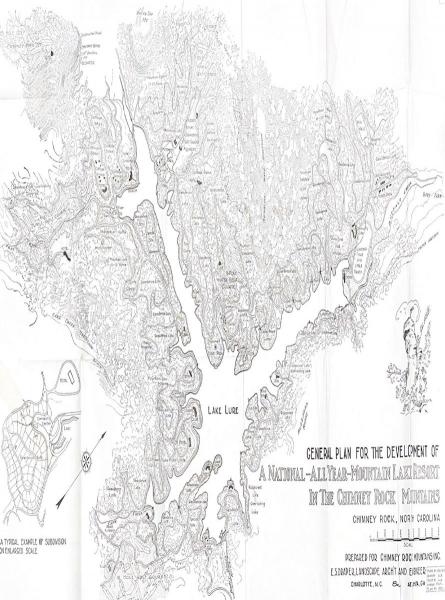
|
Figure 1: Map of proposed Lake Lure development |
LAKE LURE HISTORY AND DEVELOPMENT
Unlike the lion’s share of manmade lakes in the southeastern United States, Lake Lure was not intended as a hydroelectric project, but a resort lake from its inception. Dr. Lucius B. Morse, a practicing medical doctor from Missouri, was initially drawn to the Chimney Rock area due to health benefits of the milder, western North Carolina climate after being diagnosed with tuberculosis. Upon exploration of his new surroundings, Morse became enamored with the rugged beauty of Chimney Rock and the surrounding landscape. He envisioned a grand mountain and lake resort that would bring tourism and economic development to the region. [ii] With financial backing from his siblings, Dr. Morse purchased the original 64 acres around Chimney Rock for $4,500 (or $154,000 in today’s dollars). In the early 1920’s, Dr. Morse created Chimney Rock Mountains, Inc., with land that included the brothers’ purchase. He continued to expand the company's holdings, which would comprise over 8,000 that would ultimately become Lake Lure and its surrounding hills. [iii]
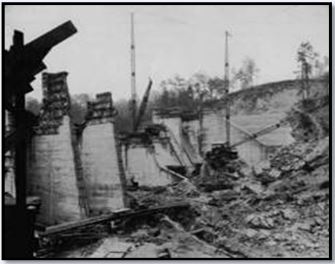
Figure 2: Dam under construction, Lake Lure, NC
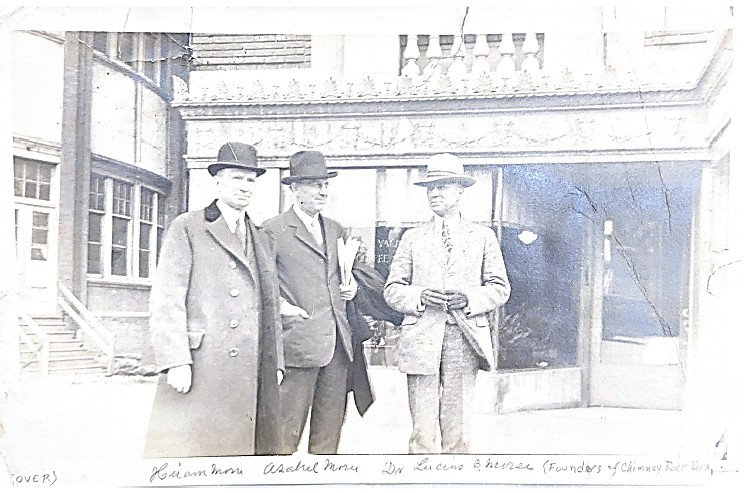
Figure 3: Dr. Lucius Morse and his brothers, Hiram and Asahel
With the land procured, Morse began the process to dam the Rocky Broad River and create his resort lake. Carolina Power Company was formed out of Chimney Rock Mountains Inc. in the early 1920s, which subsequently deeded the land and easements for the future dam site. The dam project began in 1925 and was wrapped up in 1926. Alongside the dam, other infrastructure projects were completed as part of the town’s development including the installation of sewer lines under the lake to facilitate the removal of wastewater. By 1927, Lake Lure was completed and covered over 700 acres of Morse’s original 8,000. [iv]
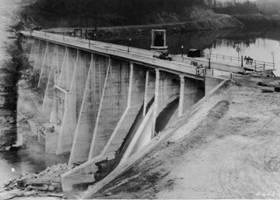
Figure 4: Dam under construction, Lake Lure, NC
1927 also saw the incorporation of the town of Lake Lure. At the time, the town’s borders encompassed the entire body of the new lake, with around 27 miles of shoreline. The Lake Lure Inn (now the Lake Lure Inn & Spa), a grand Mediterranean Revival-style hotel, and the companion Arcade building were the first pieces of Morse’s grand resort town vision to open to the vacationing public and more.
Despite all the excitement, a land bust taking place in the mid-20s in western North Carolina would seal the fate of the new development as it was coming to fruition. The town had incorporated in part as a means of raising infrastructure funds for the growing community, but it wouldn’t be sufficient to keep the vision alive. By early 1928, the development company began defaulting on its debt obligations and efforts to secure additional financing failed. Chimney Rock Company would buy its original property back at the courthouse steps in February, 1929, months ahead of the great stock market crash later that year. Pages of foreclosures would subsequently appear as more defaults occurred and the Great Depression would follow. The Town of Lake Lure would acquire the property comprising the lake itself, along with the dam, from Carolina Mountain Power Corporation in 1965. [v]
Figure 5: Lake Lure Inn & Spa, Lake Lure, NC
CHIMNEY ROCK STATE PARK
Chimney Rock nature park opened on July 4, 1916, and was preceded by the development of the Chimney Rock Highway. This was a winding three-mile stretch of road connecting visitors from the Charlotte-Asheville Highway to the base of Chimney Rock. A simple stairway was built to the rock's summit somewhere around 1890. [vi]
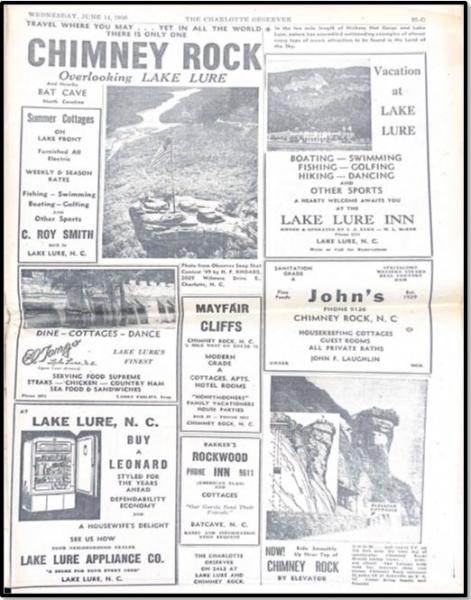
Figure 6: Advertisement for Chimney Rock, NC
Originally called Hickory Nut Gorge State Park, the North Carolina General Assembly changed the park's name to Chimney Rock State Park In 2007. It is one of eight state parks that are part of the 2002 New Parks for a New Century by the NC Division of Parks and Recreation. The initiative was launched as part of the NC Department of Environment and Natural Resources' “One North Carolina Naturally”. This program seeks protection and stewardship for the most important natural resource areas in the state. [vii]
FILM INDUSTRY
The juxtaposition of Lake Lure against Chimney Rock and the surrounding Blue Ridge Mountain range has been a desirable backdrop for the film industry since the late 1950s. Portions of the black-and-white cult classic Thunder Road were filmed in the area in 1958. Firestarter (1984), A Breed Apart (1984), and most famously Dirty Dancing (1987) were filmed at Lake Lure in the 1980s. More recent movies filmed in the area were The Last of the Mohicans (1992) and My Fellow Americans (1996). [viii]
Areas of Lake Lure were made famous in scenes of the movie, Dirty Dancing. Firefly Cove was the site of the movie’s Kellerman's Resort. The cast and crew stayed at the 1927 Lake Lure Inn and Spa. Most of the filming was done at the former Boy's Camp and the camp gymnasium was the location of the talent show and the final dance scene in the movie. Since filming, the cabin for the main character, Johnny (Patrick Swayze), has collapsed and many of the other resort staff member character cabins burned down. A few of the lake scenes took place at Morse Park and the golf scene was located on the 16th hole of Rumbling Bald Resort's Bald Mountain Golf Course. [ix]
The lead male character in the film, Patrick Swayze passed away from pancreatic cancer in 2009 at the age of 57. [x] Annually, the Town of Lake Lure continues to host the Dirty Dancing Festival in support of the Swayze Foundation. The 501c3 charity helps children and adults with special needs pursue activities in the arts, sports, and animal therapies. Activities at the festival include watermelon carrying, dance lessons, and a lake lift competition. [xi] The iconic boathouse staircase to where the lead female character, Baby, carried a watermelon and danced to the song “Wipe Out” is still extant. The staircase was rejected from the NC Study List (SL) in 2022. [xii]
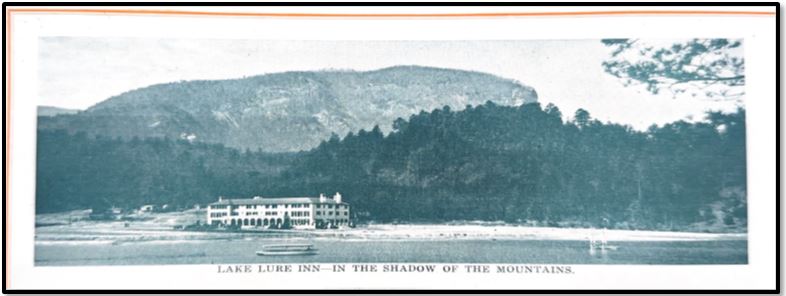
Figure 7: Lake Lure and the Lake Lure Inn
NATIONAL REGISTER OF HISTORIC PLACES-LISTED OR FORMALLY ELIGIBLE RESOURCES
The North Carolina (NC) State Historic Preservation GIS Web Service has eight (8) formally eligible and recorded resources within the Lake Lure municipal boundary (Table 1). Of the resources, one (1) is National Register of Historic Places (NRHP)-listed, four (4) are on the NC Study List (SL) with a Determination of Eligibility (DOE), two (2) have a DOE, and one (1) is individually recorded on the SL. Additional properties have been surveyed in the Lake Lure area but are not deemed eligible by the North Carolina Historic Preservation Office (NCHPO) (NCDNCR 2022).
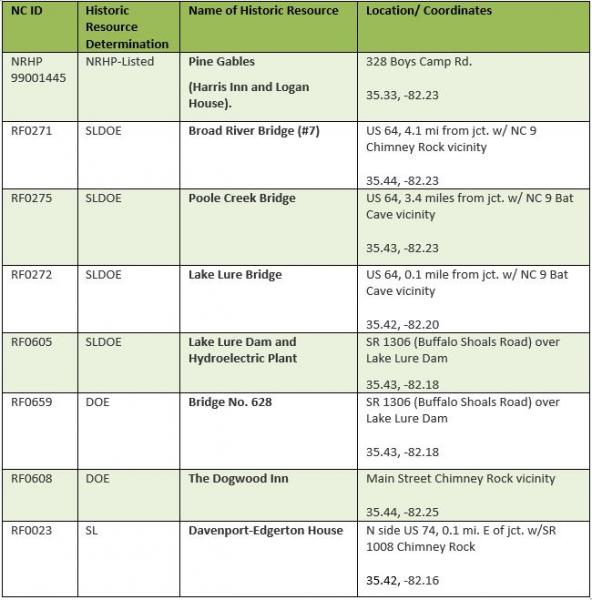
Table 1: List of NCHPO-recorded historic resources in Lake Lure, NC
The Pine Gables (NRHP 99001445) district is historically known as the Harris Inn and Logan House. It was listed in 1999 on the NRHP under Criterion A (events) and Criterion C (design/construction). The district was significant between 1800 and 1949 in terms of social history and architecture. There are eighteen (18) contributing resources and two (2) non-contributing resources within the 9.31-acre district property. Of these resources, ten (10) are buildings, five (5) are sites and three (3) are structures.
Constructed in 1800 by Dr. John Harris, the Harris Inn was the first building erected in the Pine Gables historic district. The Harris Inn was designed with Queen Ann and Victorian-style elements in a picturesque setting. The district is situated along the site of an early Cherokee Indian trail that connected the Blue Ridge Mountains of NC with the Piedmont region. The Inn functioned as a rest station for cattlemen and stagecoach travelers passing through Hickory Nut Gorge from Asheville and Rutherfordton. At the turn of the century, Dr. John Harris, and his brother Zadock Harris were the first to capitalize on the newly popular tourism and travel within Rutherford County. Their father, James Harris had been a prominent political figure and one of the largest landowners in the County. Their sister, Mrs. Bedford Sherrill, also went on to open an inn ten (10) miles west of the Harris Inn in Buncombe County (NRHP 75001244). Pine Gables historic district played a major role in the settlement, formation, and economic development of western Rutherford County
HISTORY OF BROAD RIVER BRIDGE NO. 7
Local reports suggest there was a wooden bridge that served the stagecoach route that ran through Hickory Nut Gorge. However, as the effort to develop Lake Lure moved forward, so did the effort to improve access to the area. Multiple stylish, concrete bridges were constructed in 1925 to better serve the new lake and resort town.
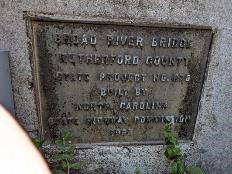
Figure 8: Broad River Bridge construction plaque (2023)
Bridge No. 7 over Broad River was built in 1925 by Chimney Rock Mountain, Inc. on behalf of the North Carolina State Highway Commission. It was built from reinforced concrete with a three-span design and topped with a deck that could accommodate two lanes of automotive traffic. The bridge featured decorative rails with a repetitive series of carved balusters and small piers with raised panels. [xiv] In total, it spanned just over 158 feet in length, and the deck had a width of 20 feet. When it was built, the bridge featured eight light posts positioned along the length of the bridge on both sides, each topped with decorative lamps. (Pictured below). They were removed years ago.
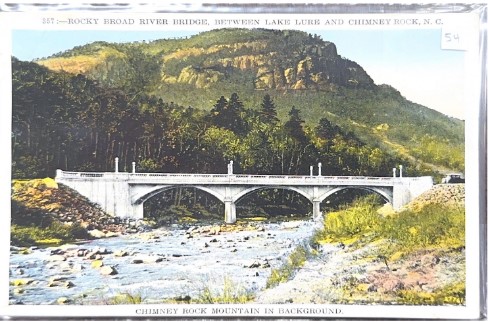
Figure 9: Bridge No. 7 with lamp posts
As the bridge itself did not have shoulders, there was no easy way for pedestrians to cross. To remedy this, a walkway was attached to the east side of the bridge and suspended from the concrete abutments. It was made of steel trusses and had a wooden floor. [xv]
For decades, the bridge served as one of the primary access points to Lake Lure from the west. Many viewed it as simply a bridge that was used daily. One that residents crossed over going to and from home, or that visitors crossed on their way to Lake Lure or Chimney Rock. It occasionally served as a backdrop for events on the river, such as water-skiing exhibitions or the yearly dragon boat races.
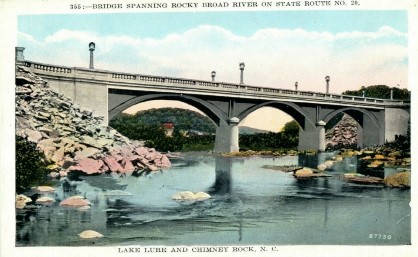
Figure 10: Post Card of Bridge No. 7
In 1995, Bridge No. 7 was added to the North Carolina State Historic Preservation Office’s state study list as a structure potentially eligible for the National Register of Historic Places (NRHP). Two years later, in 1997, the North Carolina Department of Transportation (NCDOT) conducted a survey to evaluate potential historic properties in the Hickory Nut Gorge area. Based on their research, NCDOT determined that Bridge No. 7 to be eligible for the NRHP under Criterion A for its association with the development of Lake Lure and Criterion C for its Neo-Classical design. [xvi]
The fate of the bridge changed in 2004, when NCDOT made the decision to have Bridge No. 7 torn down and replaced with a more modern bridge. Time and flooding had eroded some of the concrete on the bridge causing concerns for its stability. The pedestrian walkway had also deteriorated with time, and residents did not feel safe using it. NCDOT prepared two options to present to the replacement with one proposing to build the new bridge to the west of the existing bridge, and a second option to build the replacement to the east. [xvii] NCDOT scheduled a Citizen’s Informational Workshop on March 30, 2004, as an effort to solicit input from the public.

Figure 11: NCDOT’s proposed Alternatives for the replacement bridge over Broad River.
From that March 30 public meeting, there was a call to preserve the bridge from the residents of the Lake Lure and Chimney Rock areas. Lake Lure Mayor Jim Proctor was a particularly active voice in lobbying NCDOT to explore other options to preserve not just Bridge No. 7, but all the historic bridges around Lake Lure. [xviii] From this, NCDOT prepared a third Alternative that would involve keeping the existing Bridge No. 7 as a pedestrian walkway and constructing a new bridge west of the existing one. This option was selected as NCDOT’s Preferred Alternative. [xix]
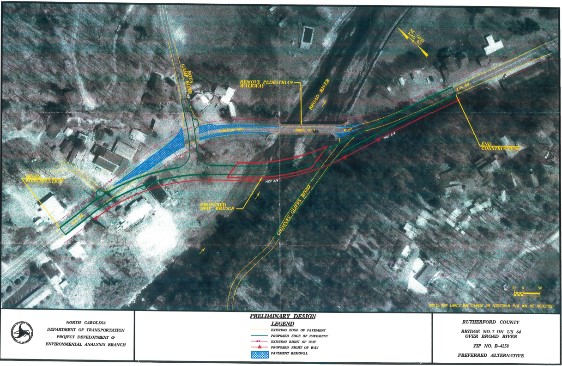
Figure 12: Preliminary Design of Preferred Alternative
In early 2006, as preparations for the construction of the new bridge were underway, the Town of Lake Lure made a request to NCDOT about transferring ownership of Bridge No. 7 to the town. [xx] NCDOT agreed to the transfer in 2007, and the agreement was approved by the Town Council in November 2007. [xxi] Although the agreement had approved, the transfer would not be fully enacted until August 2010. As part of the transfer agreement, the Town of Lake Lure received $120,000 for preservation of the bridge from NCDOT, funds originally intended to be used for the demolition of the historic bridge. [xxii] In exchange, the town would develop a plan to preserve the historic fabric of the original bridge and utilize it as a pedestrian walkway. [xxiii]
HISTORY OF THE LAKE LURE FLOWERING BRIDGE
At the start of 2010, the Town of Lake Lure was in the process of taking ownership of Broad River Bridge No. 7 as part of an agreement with the North Carolina Department of Transportation (NCDOT). The intent was to save the historic 1925 bridge from demolition and preserve it. However, the town originally did not have many plans on what to do with the bridge apart from using it for pedestrian traffic.
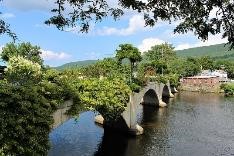
Figure 13: Bridge of Flowers, Shelburne Falls, MA
Lake Lure resident William Miller had a bigger picture in mind, that of transforming the bridge into a possible tourist destination. His idea, which was based on the Shelburne Falls Bridge of Flowers located in Miller’s home state of Massachusetts, was the convert the bridge into a walking garden. [xxiv] He presented his idea to various people within the town government. Miller was appointed as a member of the town’s Parks and Recreation board in June 2010 [xxv], only a few months before Lake Lure took ownership of Bridge No. 7. During his time on the Parks and Recreation board, Miller continued building support for the Flowering Bridge. The plan is given permission to move forward.
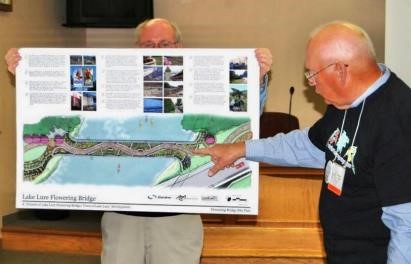
Figure 14: Bill Miller presenting his plan for the Flowering Bridge
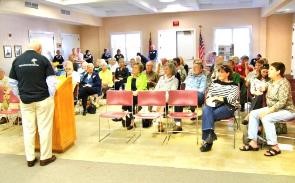
Figure 15: Bill Miller at town meeting
At the January 10, 2012, Lake Lure Town Council Meeting, William Miller presented the Historic Lake Lure Bridge #7 Preservation and Enhancement Plan, which laid out the plan to convert the bridge into a four-season pedestrian garden that would highlight the indigenous plants of North Carolina and reflect the botanical diversity of Hickory Nut Gorge. [xxvii] It received unanimous support from the town council, and approval from NCDOT came not long after. [xxviii] From there, work began in earnest with local stonemasons beginning construction on the first planters and volunteers working on other parts of the garden. To help restore some of the bridge’s historic character, a 1920 lamp and post from the Lake Lure Elementary School were installed at the garden. [xxix] While the construction proceeded, the Friends organization focused on raising money.
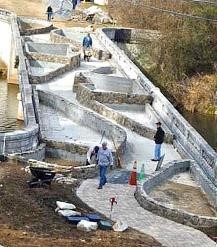
Figure 16: Flowering Bridge under construction.
The planters were finished in 2013, and the first plantings were placed in April of that year. [xxx] The grand opening for the Flowering Bridge was held in October with a great celebration. However, work did not cease, and the Flowering Bridge continued to expand its design and incorporate new gardens. [xxxi] Since its opening, the Flower Bridge has served as an important community gathering space and has been lauded as a “Living Classroom.” [xxxii] It stands as an excellent example of adaptive re-use of a significant historic resource.
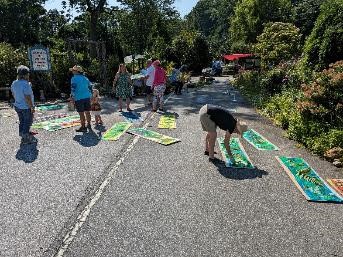
Figure 17: Art class at the Flowering Bridge
In February 2023, the Lake Lure Town Council met to discuss leasing the bridge to the Lake Lure Flowering Bridge organization, with the organization seeking a lease longer than 10 years. North Carolina State Law requires that any lease of property greater than 10 years should be treated as a sale of that property and use competitive bidding procedures. To bypass this, the Lake Lure Town Council voted to explore local legislation to move forward with the lease. The vote was unanimous. [xxxiii] The constitutionality of such a move is still being debated as the North Carolina Constitution prohibits locals acts that affect ferries or bridges, and so the issue has been elevated to the North Carolina General Assembly for discussion. [xxxiv] In the meantime, at their meeting in April, the town council passed Resolution No. 23-04-11B to move forward with the leasing the bridge for exactly 10 years. [xxxv]
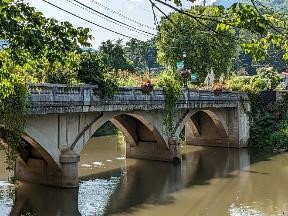
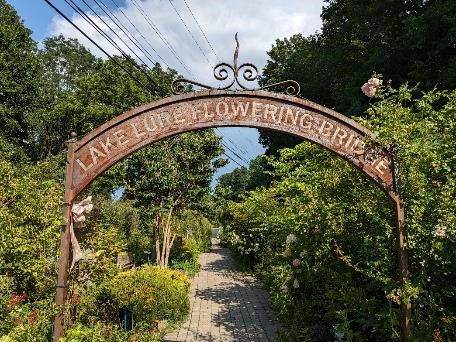
Figure 18: The Lake Lure Flowering Bridge (2023)
Voices from the Community
"The Flowering Bridge represents one of the best examples of the community working together to create a positive and beautiful outcome that might have otherwise not happened. The bridge is now a wonderful attraction for both residents and visitors to enjoy, thanks to a lot of vision, teamwork and dedication."
Todd Morse, Lake Lure Resident.
“Chuck Place and I had the minimalistic idea of just preserving a neat bridge…and there’s some great things that are used. But the Flowering Bridge folks have taken that to the nth degree.”
Former Mayor Jim Proctor, Lake Lure resident and historian
References
[i] Corbitt, David Leroy. 1987 The formation of the North Carolina counties, 1663-1943. North Carolina State Department of Archives and History, North Carolina.
[ii] Chimney Rock State Park. 2022 History: More about The Morses, movies, and our transition to statehood. Chimney Rock at Chimney Rock State Park. Web Page. https://www.chimneyrockpark.com/about-us/history/, accessed November 7, 2022
[iii] Sherk, George William, D.Sc., J.D. 2005 The Law of Lake Lure. The Law of Lake Lure. University of Denver Water Law Review 8. 463-516.
[iv] Ibid.
[v] Town of Lake Lure. 2022 Lake Lure Yesterday and Today. Town of Lake Lure, North Carolina. Web Page. https://www.townoflakelure.com/community/page/lake-lure-yesterday-today, accessed November 7, 2022.
[vi] Agen, Kelly. 2015 Chimney Rock State Park (Originally Hickory Nut State Park). State Library of North Carolina. https://www.ncpedia.org/chimney-rock-state-park, accessed November 9, 2022.
[vii] Ibid.
[viii] Andrews, M.A. 2014 Lake Lure. RutherfordWeekly.com. Electronic document, https://www.rutherfordweekly.com/lake-lure-cms-3617, accessed November 8, 2022.
[ix] Rutherford County, Tourism and Development Office. 2022 Dirty Dancing. Lake Lure, Chimney Rock, and the Blue Ridge Foothills. Web page. https://www.visitncsmalltowns.com/listing/dirty-dancing/365/, accessed November 9, 2022.
[x] Gates, Anita. 2009 Patrick Swayze, Star of ‘Dirty Dancing’, Dies at 57. New York Times. https://www.nytimes.com/2009/09/15/movies/15swayze.html, accessed November 8, 2022
[xi] Rutherford County, Tourism and Development Office. 2022 Dirty Dancing. Lake Lure, Chimney Rock, and the Blue Ridge Foothills. Web page. https://www.visitncsmalltowns.com/listing/dirty-dancing/365/, accessed November 9, 2022.
[xii] North Carolina Department of Natural and Cultural Resources (NCDNCR). 2022 NC GIS General Audience. “Lake Lure”, https://nc.maps.arcgis.com/apps/webappviewer/index.html?id=79ea671ebdcc4..., accessed November 6, 2022.
[xiii] Proctor, James Robert. 1999 National Register of Historic Places Nomination: Pine Gables, Rutherford County, North Carolina. Lake Lure, NC: Owner of Pine Gables, 1999.
[xiv] North Carolina Department of Transportation. NCDOT TIP# W-2963, Final Identification and Evaluation. 1998. Page 12.
[xv] Ibid.
[xvi] North Carolina Department of Transportation. NCDOT TIP# W-2963, Final Identification and Evaluation. 1998. Pages 12-13.
[xvii] North Carolina Department of Transportation. US 64 Bridge Replacement over Broad River- Newsletter #1. 2004
[xviii] Jim Proctor. Letter to John Wadsworth. April 2, 2004.
[xix] North Carolina Department of Transportation. US 64 Bridge Replacement over Broad River- Newsletter #2. 2005
[xx] Town of Lake Lure. Minutes of the February 14, 2006 Regular Council Meeting, Page 4. 2006.
[xxi] Town of Lake Lure. Minutes of the November 13, 2007 Regular County Meeting, Page 3. 2007.
[xxii] Rutherford County. Transfer of Ownership Agreement for NCDOT Bridge No. 7. 2010.
[xxiii] Ibid.
[xxiv] Miller, William. 2016, November. The Bridge to Somewhere Beautiful. TEDxTryon
[xxv] Town of Lake Lure. Minutes of the June 8, 2010 Regular Council Meeting, Page 5. 2010.
[xxvi] Tanner, Kathy. Interview by Michael Hart. 25, July, 2023.
[xxvii] Friends of Lake Lure Bridge and Lake Lure Flowering Bridge, Inc. Historic Lake Lure Bridge #7 Preservation and Enhancement Plan. December 5, 2011.
[xxviii] Town of Lake Lure. Minutes of the January 10, 2012 Regular Council Meeting, Page 6. 2012.
[xxix] Development Timeline. Lake Lure Flowering Bridge. https://lakelurefloweringbridge.org/development-timeline/. Accessed 8/9/2023.
[xxx] Tanner, Kathy. Interview by Michael Hart. 25, July, 2023.
[xxxi] Development Timeline. Lake Lure Flowering Bridge. https://lakelurefloweringbridge.org/development-timeline/. Accessed 8/9/2023.
[xxxii] Tanner, Kathy. Interview by Michael Hart. 25, July, 2023.
[xxxiii] Town of Lake Lure. Minutes of the February 14, 2023 Regular Council Meeting, Page 6. 2023.
[xxxiv] North Carolina General Assembly. House Bill 397: Town of Lake Lure/Property Lease. June 27, 2023.
[xxxv] Town of Lake Lure. Minutes of the April 11, 2023 Regular Council Meeting, Page 14. 2023
Update 8/7/25
It is with deep regret that the Town of Lake Lure announces that the Lake Lure Flowering Bridge must be taken down due to the significant structural impacts from last September 2024. The historic structure sustained severe damage during Tropical Storm Helene. After thorough assessments by two independent engineering firms, it was determined that the bridge is beyond repair and cannot be restored.
Following a competitive bid process, the Town has awarded the contract for removing the bridge to Mitch Contracting. This process will likely take several weeks, but the project will begin on August 18, 2025.
For everyone's safety, it is crucial that the public avoid the demolition site at all times.
This includes the area on the east side of the Bridge as well as the area on the West Side, near the Lake Lure Flowering Bridge Education Center.
Please respect all posted signage and barriers.
The Town of Lake Lure recognizes the historical significance of the Lake Lure Flowering Bridge, and we remain mindful of what it has meant to our community and to the countless visitors who have come to tour it. We can never thank the Lake Lure Flowering Bridge volunteers enough for their dedication and commitment to beautifying the Bridge and the Town of Lake Lure over the years. For over a decade, they worked tirelessly to create a gateway to somewhere beautiful!
Thank you for your understanding and continued support during this difficult transition. Our hearts are with our beloved Lake Lure Flowering Bridge.
